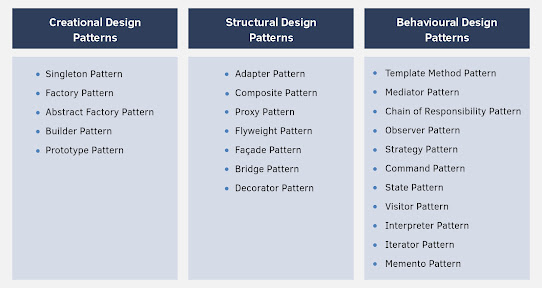Java Builder Design Pattern - (Creational Pattern)
Mastering the Builder Design Pattern: Simplifying Complex Object Construction
In the world of software design patterns, the Builder pattern stands out as a powerful technique for constructing complex objects. It separates the construction process from the representation, allowing for more manageable and flexible code. In this blog post, we'll delve into the Builder pattern, explore its benefits, and demonstrate how it can simplify the creation of complex objects. We'll also look at the role of the Director and how the Builder interface promotes consistency and flexibility.
The Problem: Complexity in Object Construction
Consider a scenario where you need to create instances of a Car class. This class has multiple attributes such as id, brand, model, color, and more. Constructing an object with numerous attributes can quickly become cumbersome and error-prone, especially when many parameters are optional or have default values.
Without the Builder pattern, the code might look something like this:
Car car = new Car(2122, "Bugatti", "Chiron", "Blue", 2, "8L", 115);This approach has several drawbacks:
- It’s difficult to read and understand.
- It’s prone to errors, especially if the order of parameters is mixed up.
- Adding new attributes or changing defaults can lead to breaking existing code.
The Solution: Builder Pattern
The Builder pattern offers a solution by providing a way to construct complex objects step-by-step. Here’s how it looks with the Builder pattern:
Car Class
public class Car { private final int id;
private final String brand;
private final String model;
private final String color;
// other attributes...
public Car(int id, String brand, String model, String color, ...) {
this.id = id;
this.brand = brand;
this.model = model;
this.color = color;
// initialize other attributes...
}
}
CarBuilder Class
public class CarBuilder { private int id;
private String brand;
private String model;
private String color;
// other attributes...
public CarBuilder id(int id) {
this.id = id;
return this;
}
public CarBuilder brand(String brand) {
this.brand = brand;
return this;
}
public CarBuilder model(String model) {
this.model = model;
return this;
}
public CarBuilder color(String color) {
this.color = color;
return this;
}
// other builder methods...
public Car build() {
return new Car(id, brand, model, color, ...);
}
}
Using the Builder pattern:
CarBuilder builder = new CarBuilder();Car car = builder.id(2122)
.brand("Bugatti")
.model("Chiron")
.color("Blue")
.build();
This approach offers several advantages:
- Readability: The code is more readable and self-explanatory.
- Flexibility: You can easily add or modify attributes without affecting existing code.
- Safety: Reduces the risk of errors related to parameter ordering.
Introducing the Director
The Director plays a crucial role in the Builder pattern by encapsulating the construction process of a product. It hides the details of the product construction from the client code. Here’s an example:
Director Class
public class Director { public void buildBugatti(CarBuilder builder) {
builder.id(2122)
.brand("Bugatti")
.model("Chiron")
.color("Blue");
// set other attributes...
}
public void buildLambo(CarBuilder builder) {
builder.id(3131)
.brand("Lamborghini")
.model("Aventador")
.color("Yellow");
// set other attributes...
}
}
// Usage
Director director = new Director();
CarBuilder carBuilder = new CarBuilder();
director.buildBugatti(carBuilder);
Car car = carBuilder.build();
The Director simplifies the client code by centralizing the construction logic. It ensures that the objects are built consistently and correctly.
Leveraging the Builder Interface
To further enhance flexibility and consistency, you can define a Builder interface. This interface enforces a standard way to build objects across different types of builders.
Builder Interface
public interface Builder<T> { Builder<T> id(int id);
Builder<T> brand(String brand);
Builder<T> model(String model);
Builder<T> color(String color);
T build();
}
CarBuilder and CarSchemaBuilder Implementing Builder
public class CarBuilder implements Builder<Car> { private int id;
private String brand;
private String model;
private String color;
public Builder<Car> id(int id) { this.id = id; return this; }
public Builder<Car> brand(String brand) { this.brand = brand; return this; }
public Builder<Car> model(String model) { this.model = model; return this; }
public Builder<Car> color(String color) { this.color = color; return this; }
public Car build() { return new Car(id, brand, model, color); }
}
public class CarSchemaBuilder implements Builder<CarSchema> {
private int id;
private String brand;
private String model;
private String color;
public Builder<CarSchema> id(int id) { this.id = id; return this; }
public Builder<CarSchema> brand(String brand) { this.brand = brand; return this; }
public Builder<CarSchema> model(String model) { this.model = model; return this; }
public Builder<CarSchema> color(String color) { this.color = color; return this; }
public CarSchema build() { return new CarSchema(id, brand, model, color); }
}
Director Class with Interface
public class Director { public void buildBugatti(Builder<?> builder) {
builder.id(2122)
.brand("Bugatti")
.model("Chiron")
.color("Blue");
// set other attributes...
}
public void buildLambo(Builder<?> builder) {
builder.id(3131)
.brand("Lamborghini")
.model("Aventador")
.color("Yellow");
// set other attributes...
}
}
// Usage
Director director = new Director();
CarBuilder carBuilder = new CarBuilder();
director.buildBugatti(carBuilder);
Car car = carBuilder.build();
CarSchemaBuilder carSchemaBuilder = new CarSchemaBuilder();
director.buildBugatti(carSchemaBuilder);
CarSchema carSchema = carSchemaBuilder.build();
Class Diagram of Builder Design Pattern
Conclusion
The Builder pattern is a powerful tool for constructing complex objects. It promotes code readability, flexibility, and safety by separating the construction process from the representation. The Director further enhances this pattern by centralizing the construction logic, ensuring consistency and correctness. The Builder interface enforces a standard way to build objects, promoting consistency and flexibility across different builder implementations.
By leveraging the Builder pattern, you can simplify the creation of complex objects, making your code more maintainable and robust. Whether you're building cars, database connections, or any other complex objects, the Builder pattern is a valuable addition to your software design toolkit.



Comments
Post a Comment